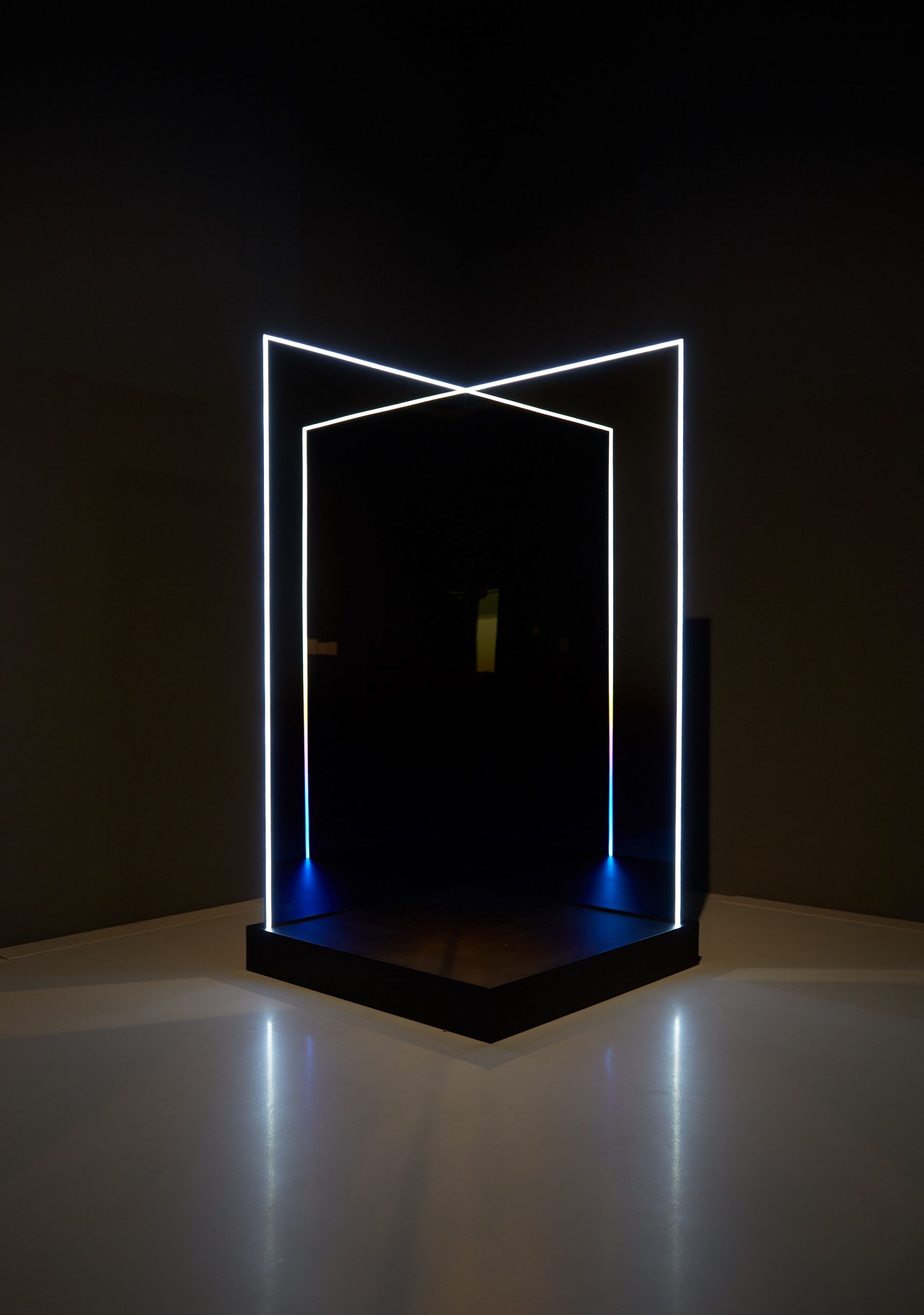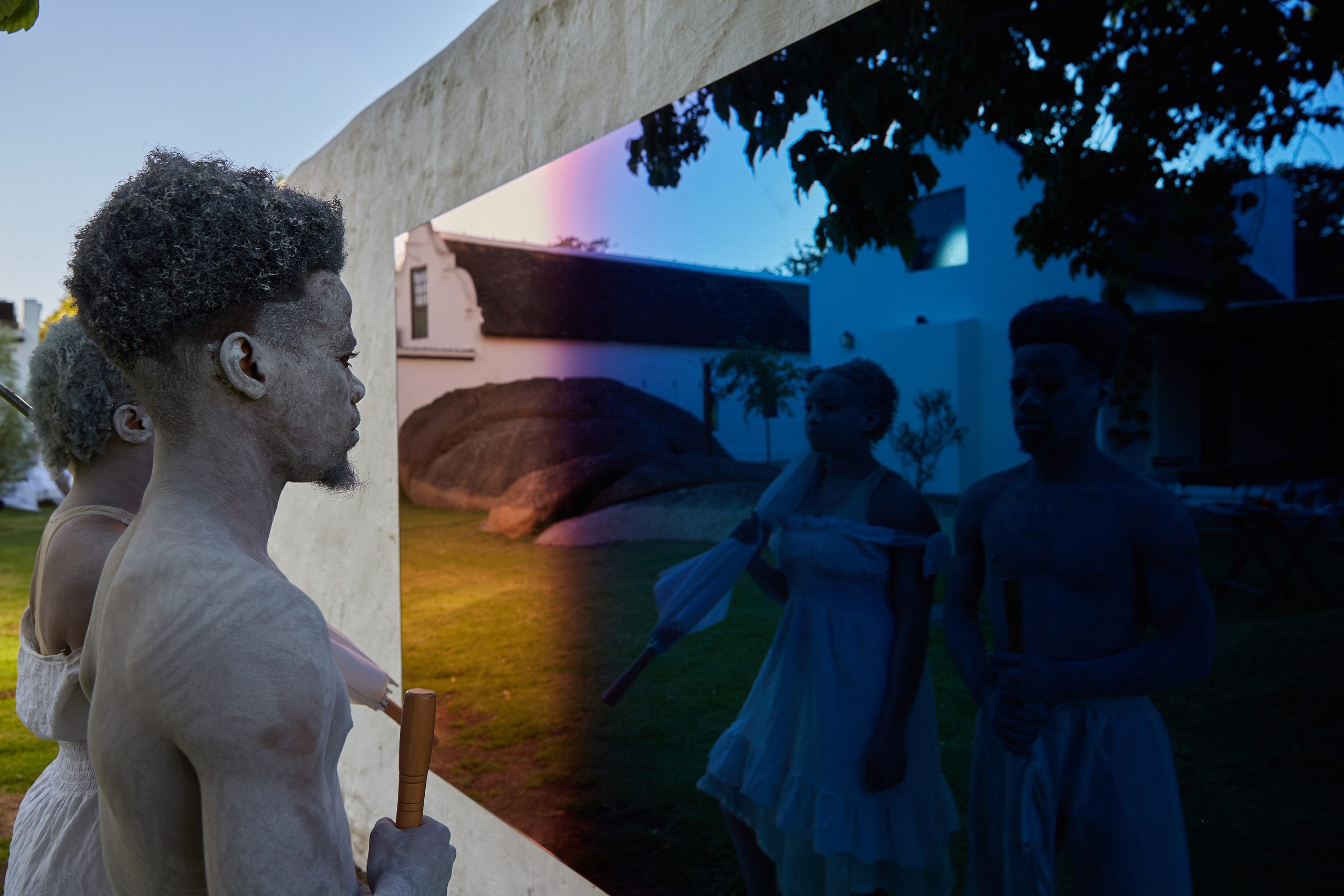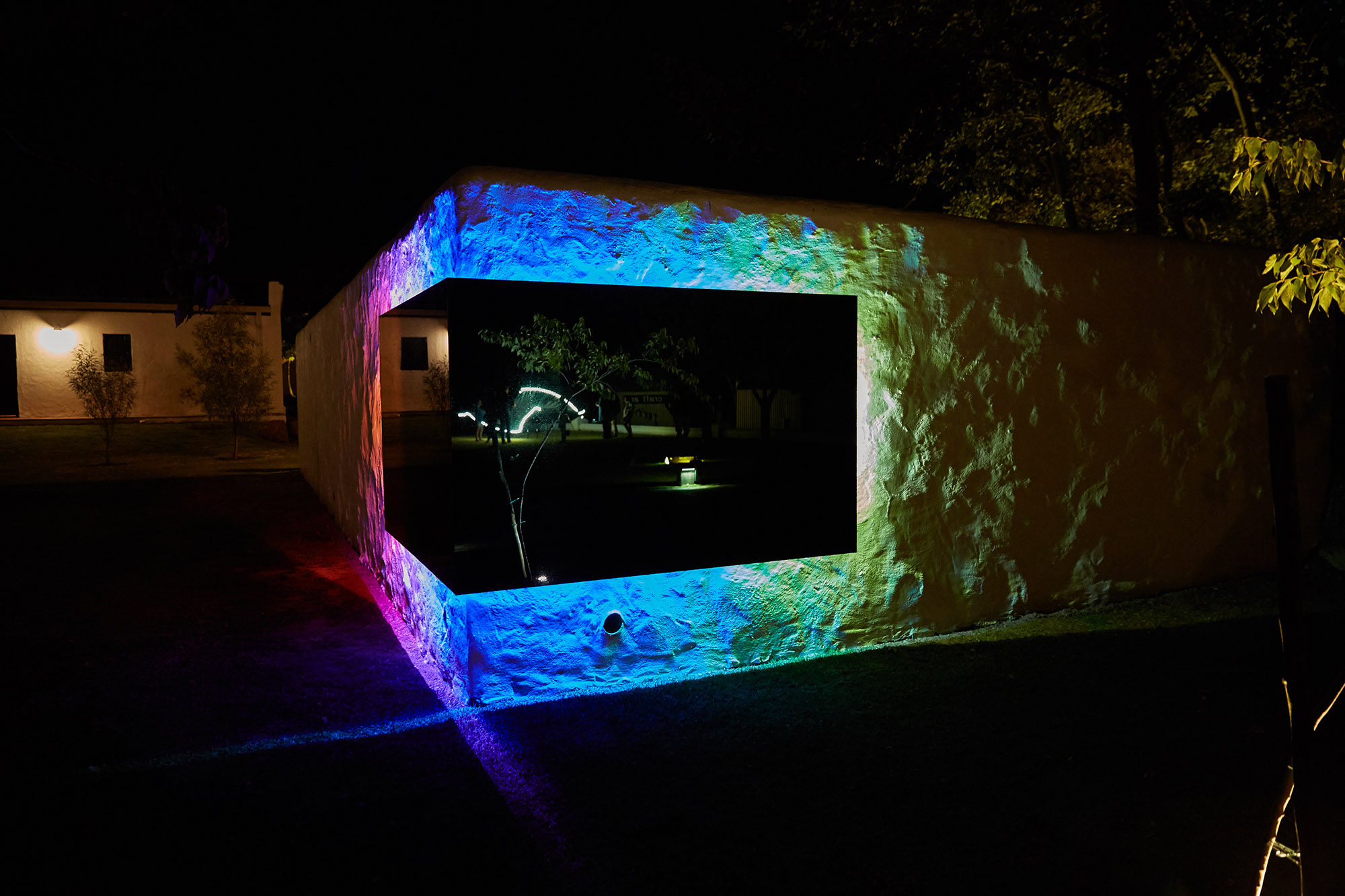Wendy Dixon and Caitlin Warther are the founders of art duo, Warther Dixon. Their collective creative journey began by working on commercial projects together. Wendy’s background in brand strategy and graphic design, together with Caitlin’s background in photography, interior design, writing and philosophy, present an interesting mixture of artistic and thought processes. They produced their first work together; The Four Doors, for the Light Art Festival at Spier Wine Farm in 2018. Conceptualising and making the work collaboratively, prompted a desire to form a collective practice. Their practice revolves mainly around mirror and light-based installations, but it also stretches to include within its fold mediums such as metals like brass as well as film and photography.
Caitlin shares with me her fascination with light and its beginning stemming from her background in photography. Learning about light- first through the camera and its modes of manipulation to create and capture image, and then through working with light in space, as studio practice and with equipment required to block, enhance or redirect it. This developed an understanding of light as a material that could be used as an art medium and not just as an appendage in the creation of an artwork. This shift also connects to the duo’s conceptual contemplations on the divine, and how light becomes a symbolic channel to feel a sense of spirit. Their working with mirror follows similar philosophical meditations, with a consideration of the mediums offering of physical reflection, and so its presenting of a direct relationship to self-reflection and human connections. The mirrors often have textured elements or colour explorations, adding a layer to the ways in which what they reflect, is perceived. Wendy’s own practice involved the use of mirror for sculptural design pieces, again pointing to how the duo draw on their individual artistic explorations and methodologies in their collective and collaborative creativity.

Warther Dixon’s use of mirrors also allows viewers to become part of their work, seeing themselves replicated through the medium. The works presented as part of the recent Everard Read virtual exhibition ‘The Portrait Show’ curated by Musa Nxumalo reveal the intersection between making work and inviting viewers to become part of the process. Framed within the thematic concept for the show, Warther Dixon’s portrait series is constituted by enchanting plays of colour gradient mirror on glass that stretches the definition of a portrait, making those who engage with the work, both its viewer and subject. The connection between mirror and light impresses on one the affective quality that their work possesses. Their site specific works plays with scale in a way that demands attention and offers a meditative experience mediated through ocular and other bodily receptors, reconfiguring the viewer’s interaction with space. This is achieved through the duo’s choice to use their own bodies and sense of scale and space to in-effect feel the spaces for which they will produce their artistic responses. With these site-responsive works beginning with information absorbed and felt by the body, it becomes clear how this embodied experience can be recuperated and translated into their final works, with the artists transmitting their experiences onto the viewers, who are free to expand on and react to this affective transference. Displaying these works between different spaces also presents a multiplication of interpretations and encounters.

Warther Dixon have also created works which respond to each other, albeit in different spaces and at different times. Pleasure to Meet You presented as part of the group show ‘Still Here Tomorrow to High Five You Yesterday’ curated by Azu Nwagbogu at Zeitz Mocaa in 2019, prompted contemplations on time and space. This piece appeared in a corner, drawing the viewer inward. Split Mirror presented at Spier Wine Farms can be read as the inverse of Pleasure to Meet You. This work demanded movement, requiring viewers to walk around the corner to become aware of the other side of the work, whereas Pleasure to Meet You enabled a stationary encounter. Human connection becomes an important element in the intentions of their practice, with their mediums giving viewers the possibility of connecting with themselves, and the scale of the work making it impossible for others to not be present in one’s own encounter and engagement with the works. The extension of the personal encounter into a collective one, pulls Warther Dixon’s considerations of the divine and spiritual into the fore once again.
The three key words Warther Dixon use to describe their thematic interests – time, identity and spirit – are closely connected to what drew them to their choices to work with light and mirror. Time is bonded with light, given light’s ephemeral nature. It becomes a marker of change and transience for human beings, but also connects to ideas related to the spirit. Their decontextualisation of light and its interpretation of a medium in its own right, makes its symbolic quality able to be read receptively in relation to their thematic foci. The emotional and evocative experience tied to the reflection through mirrors prompts the unpacking and confrontation with identity. Caitlin describes the encounters with their work as a kind of embodied learning, with intellectual articulations considered secondary to the immediate bodily and emotional reactions induced in the presence of their work.

In addition to producing work, Warther Dixon are invested in the development of younger artists. While travelling or working on a residency the duo offer up their studio space in Bo-Kaap, creating a kind of micro residency and mentorship opportunity where they guide artists on professional practice and artistic expansion and are always open to other artists getting in touch about this. Warther Dixon are currently working on an online project that speaks to the moment we currently find ourselves in. This again points to their emphasis on creating responsive art. I am looking forward to how their practice evolves with the extension of making work that lives online.




















































